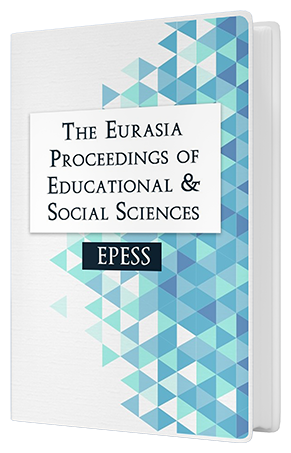SPIRAL DESIGN OF MICROSCOPE IN BOTH TURKISH SCIENCE CURRICULUM AND TURKISH SCIENCE AND TECHNOLOGY CURRICULUM
Keywords:
Science curriculum, microscope, spiral curriculum, lens and refractionAbstract
Reflection, refraction, light, mirror and lens are needed terms for effective learning on microscope. It mainly depends on reflection and refraction. Students need to engage such scientific terms before the microscope practices. Therefore, this study investigates the contents related to the microscope in accordance with spiral curriculum. For an overall looking to microscope content in Turkish Science Curriculum (TSC), the official documents published by the Ministry of National Education were analyzed at part of reflection, refraction, light, mirror and lens. The contents which were listed in a comparison way used to examine whether there is a parallelism between such related terms or not. It is obvious that the K-level curriculum includes microscope. At 4 grade, students make simple observations using this tool. Each part of microscope are mainly introduced to the children at 6 grade. However it is clear that light and lens are needed contents to understand the microscope at 4 grade, lens is located in TSC at 8 grade. Although light is located in TSC in accordance with the spiral curriculum design, lens has not got a similar scope and sequence as it located in curriculum later than microscope practices. For further learning of such activities, it is absolutely required to be aware of the fact that lens and refraction are important basics for microscope. The result of this study also points out that there is a similar location between TSC and Turkish Science and Technology Curriculum (TSTC) in terms of spiral design of microscope use.Downloads
Published
Issue
Section
License
Copyright (c) 2016 The Eurasia Proceedings of Educational and Social Sciences

This work is licensed under a Creative Commons Attribution-NonCommercial-ShareAlike 4.0 International License.
The articles may be used for research, teaching, and private study purposes. Any substantial or systematic reproduction, redistribution, reselling, loan, sub-licensing, systematic supply, or distribution in any form to anyone is expressly forbidden. Authors alone are responsible for the contents of their articles. The journal owns the copyright of the articles. The publisher shall not be liable for any loss, actions, claims, proceedings, demand, or costs or damages whatsoever or howsoever caused arising directly or indirectly in connection with or arising out of the use of the research material. All authors are requested to disclose any actual or potential conflict of interest including any financial, personal or other relationships with other people or organizations regarding the submitted work.




